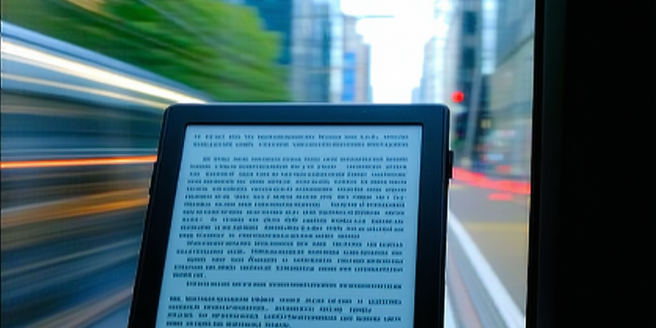E-reader Display Technology Comparison

The Evolution of E-Reader Displays
The journey of e-reader displays began with basic monochrome screens, which were functional but lacked versatility. Early models predominantly used LCD technology, which was a major step forward but often caused eye strain during prolonged reading. The introduction of E Ink technology transformed the landscape, offering paper-like readability and minimal power consumption, providing book lovers an experience closer to traditional reading. Over the years, E Ink displays have seen improvements, such as better contrast, quicker refresh rates, and more responsive touch capabilities, enhancing the user experience. Meanwhile, continuous research is propelling advancements in thinner and lighter displays, leading to the evolution of flexible screens. As technology progresses, e-reader manufacturers strive to achieve the optimal balance between visual comfort, portability, and longevity, catering to diverse reader preferences.
E Ink vs. LCD: Understanding the Difference
E Ink and LCD are the two dominant technologies in e-reader displays, each with distinct characteristics. E Ink displays, favored for reading, replicate the appearance of paper through microcapsules of black and white pigments. This allows for comfortable outdoor reading and extended battery life due to their minimal power use. On the contrary, LCD displays, common in tablets, utilize a backlight to enhance color vibrancy and offer quicker refresh rates, making them ideal for multimedia consumption. However, LCD screens can cause eye fatigue over long periods due to their bright backlight. Choosing between E Ink and LCD depends on the user’s primary needs—opting for E Ink for extensive reading sessions, or LCD for a more interactive and colorful experience. Understanding these differences aids users in selecting devices tailored to their specific reading habits.
Color E-Paper: A New Era of Reading
The advent of color e-paper represents a significant milestone in e-reader technology, providing a vibrant reading experience while retaining the advantages of traditional E Ink displays. This technology integrates colored microcapsules or filters, bringing images to life without compromising battery efficiency or readability in bright environments. Initially, color e-paper displays struggled with saturation and contrast, limiting their appeal. However, recent advancements have led to richer colors and sharper images, appealing to comic book enthusiasts and magazine readers. Color e-paper’s lack of backlight significantly reduces eye strain compared to LCD screens, maintaining the focus on text-centric content. As color e-paper continues to improve, it opens up new avenues for e-readers, expanding their versatility while enhancing the user’s engagement with the content. This evolution signifies an exciting transformation in digital reading.
Impact of Screen Resolution on Reading Experience
Screen resolution plays a pivotal role in shaping the e-reading experience, defining the clarity and detail of text and images. Higher resolutions offer sharper text and crisper images, essential for detailed illustrations or graphical novels. In e-readers, screen resolution is measured in pixels per inch (PPI), with higher PPIs ensuring finer detail. While early e-readers sported resolutions around 150 PPI, modern devices boast resolutions of 300 PPI or more, comparable to printed text quality. The impact of high resolution is particularly significant when reading for extended periods, as sharp text reduces eye strain and enhances readability. Additionally, high-resolution screens support more complex page layouts, benefiting academic or technical materials. Therefore, as screen technologies advance, higher resolutions continue to augment the quality and comfort of digital reading experiences.
Battery Life: How Display Type Affects Usage Time
The type of display in e-readers significantly influences battery life, dictating how long a device can function without recharge. E Ink technology stands out for its energy efficiency, consuming power only during page turns, which allows weeks or months of battery life per charge. This minimal power usage is ideal for frequent readers who require extended reading sessions without interruption. Conversely, LCD displays, while offering vivid colors and faster refresh rates, demand continuous power for their backlight, which rapidly drains the battery. For multimedia devices where regular recharging is manageable, this trade-off may be acceptable. However, for dedicated e-readers focused on long-term endurance, E Ink remains the superior choice. Understanding these differences aids consumers in selecting the right device based on their reading habits and battery life expectations, optimizing their overall user experience.